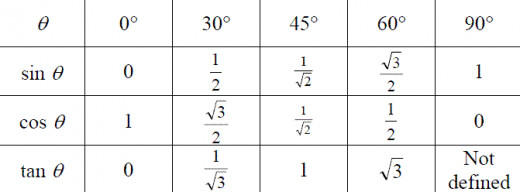Vector is a quantity having Direction as well as Magnitude
Vectors

Just like the image above :
Side 1 which is a and Side 2 which is b. If you want to find the Side 3 which is c.
You use the equation a² + b² = c² (Note : This is for Right Triangle)
Example :
a = 3 b = 4 so c = 3² + 4² = 5²
If the triangle is not a Right Triangle use this equation instead :
R = √((F1² + F2²) + 2 * F1 * F2 * Cos Θ)
Example :
F1 = 3 F2 = 4 and Θ = 60
R = √((3² + 4²) + 2 * 3 * 4 * Cos (60))
R = √(25 + 2 * 3 * 2) = √(25 + 12) = √37 which is ≈ 6.08
Just like the image above :
Side 1 = Side 3 which is a and Side 2 = Side 4 which is b. If you want to find the Side 5 which is c.
You use the equation a + b / b + a = c (Note : This is for parallelogram)
Example ;
a = 3 and b = 1 so c = 3 + 1 = 4
Rmin ≤ R ≤ Rmax While Rmin = F1 - F2 and Rmax = F1 + F2
Now using this Triangle we have this equation :
Sin = y ÷ r and Cos = x ÷ r while Tan = y ÷ x
From this we know that Fx = F * Cos Θ and Fy = F * Sin Θ

Now to find the Magnitude and Direction of the vectors use this equation :
Magnitude = √ΣFx² + ΣFy²
Direction = Tan Θ = ΣFy ÷ ΣFx
Example :
F1 = 5 N with Θ = 30
F2 = 3 N with Θ = 60
F1y = 5 Cos(30) ≈ 4.33
F1x = 5 Sin(30) = 2.5
F2y = 3 Cos(60) = 1.5
F2x = 3 Sin(60) ≈ 2.60
Magnitude = √4² + 6.9² ≈ 8
Direction = 6.9 ÷ 4 = 1.725
Dot and Cross Product
Dot Product also called Scalar Product. Geometrically the Dot Product of 2 vectors is Magnitude of one time projection of the second onto the first.
A . B = (AxI + AyJ + AzK) . (BxI + ByJ + BzK)
A . B = AxBx + AyBy + AzBz
Same Angle
I . I = J .J = K . K = (1) (1) (Cos 0) = 1
Different Angle
I . J = J . K = K . I = (1) (1) (Cos 90) = 0
Example :
A = 8m
B = 10m
A . B = A B Cos 37 = 8 10 0.8 = 64m
Cross Product also called Vector Product. Geometrically the Cross Product of 2 vectors is area of parallelogram between them.
A x B = C
A is the first, B is the second and C is the resultant. There is a right hand rule to determine the direction of the resultant. Just imagine that A is your finger, B is palm and C is your thumb.
Example :
If A is going to North and B is going to West. Just point your finger to North and face your palm to the West and see where is your thumb pointing at. Your thumb should be pointing Upwards.
I x I = J x J = K x K = (1) (1) (Sin 0) = 0
I
K J
Now this is the IJK Triangle. If it turns in clockwise the result is positive but if it turns in anti-clockwise the result is negative.
Example ;
A = 4i + 3j - 2k
B = 7i + 2j + 5k
A x B = 8k - 21k - 13k - 14j - 20j - 34j + 15i + 4i + 19i = 38i - 68j - 26k


No comments:
Post a Comment